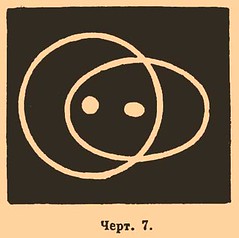Dirt vs. soil

Grime, or even more precisely, soil, is amazing stuff then one that people very
much ignore. Although not all grime/soil isn’t produced equal. I have been
intrigued with soil since i have discovered how lengthy and just how much material it
takes to really make it.
With regard to clarification, let us make a few distinctions.
Grime – mainly mineral based pebbles and carefully ground rock.
Soil – mineral, plant, fungi and animal based.
It’s not hard to tell grime and soil apart. Soil will often be dim in
color this will let you wealthy earthy smell. Grime just has a tendency to smell of dust.
There’s lots of grime all over the world, it’s in plentiful supply – no
worries there. The issue with grime is the fact that it is a filler and it has hardly any
nutrient content since it’s mainly made up of fundamental minerals – calcium, iron
etc. While they are needed to some extent by plants, the actual existence giving
qualities have been in the soil.
Soil is really a smorgasbord of nutrition animal waste and rotting plants
and animals increase its fertility. It consists of numerous existence forms
including bugs, fungi and bacteria – this is an ecosystem unto itself.
Due to there being a lot grime around, we are able to often view it like a unlimited
resource but a lot of the grime in the world is not really able to
keeping existence.
The soil/earthworm connection
I started to comprehend just how much matter it requires to create soil when beginning a
earthworm
farm. For the reason that scenario, the earthworms break lower the organic material departing
what’s essentially an extremely wealthy soil – earthworms are an essential part from the soil
ecosystem.
We put 100s of pounds of waste into our earthworm farm throughout the very first year
and also at the finish from it still were not in a position to fill the earthworm bin track of castings
(earthworm poo). Everything organic waste stops working a lot because it mainly
includes water.
Soil horizons
Soil layers are known as horizons. The top layer is known as the O
horizon, it’s made from new and rotting organic materials and essentially functions
like a
mulch. The “A” horizon below it’s a combination of rock
contaminants and decomposed organic materials – the fertile soil. This is often a
couple of inches to to some feet thick. The B horizon is nearly entirely rock
material, and several nutrition which have cleaned from the A horizon. The C
horizon is principally bedrock in a variety of states of weathering and stretches to some
depth of 1000’s of ft.
The fragile character of soil
Merely a really small area of our world has soil appropriate for keeping
high amounts of plant existence and also the silly factor is we often build our houses
in places that this wealthy soil is. When our home had been built, I recall
all of the top soil being crawled off the top the subdivision and left in large
piles – that the wind then began on, leading to localized dust storms so
thick that sometimes we’re able to hardly see over the road.
We lose millions, possibly vast amounts of a lot of top soil around the globe
every year that ends up within our oceans. Top quality soil has a tendency to extend
downwards just inches instead of ft – and that is what sustains us so
it’s crucial that people preserve what we should have.
Risks to soil:
Acidification – usually happens through intensive watering and cropping
when certain nutrition and minerals are removed that affect the acidity/alkali
balance, or by utilizing an excessive amount of nitrogen-wealthy fertilizer.
Soil contamination – frequently contaminated by industrial chemicals. It may
sometimes take a long time for oils etc. to clean from soil as far as that
plant existence can grow again.
Desertification – this can often be triggered by drought, but additionally by
general abuse where an excessive amount of is removed from the land without anything being
put back to it. The land becomes infertile.
Soil erosion – once plant cover is taken away, such as with the situation of
deforestation, the soil is no more replenished with nutrition and it is easily
amazed or transported by rainwater runoff.
Salinity – where saline ground water involves the top, disappears and
leaves salts behind. This generally happens where deep rooted trees are removed.
Steps you can take towards saving our soil
Even when you do not have a yard, we are able to all do our bit to visit towards
conserving our precious soil.
– Begin a earthworm
farm and return the casting towards the earth
– Launch a compost
pile
– Mulch this doesn’t only save
water inside your garden but safeguards the soil and contributes to it
– Use natural
manure
– Plant more trees and deep rooted plant life
– If you are moving soil in one area to a different, try to get it done on the calm
day or hide the pile
– Don’t pour hazardous
waste and toxic substances to the ground e.g. coal and oil.
While “Peak
Oil” continues to be getting elevated media attention recently, an issue just
as urgent is Peak Soil. While a existence without oil is really a disturbing concept, existence
without sufficient fertile soil is completely frightening.